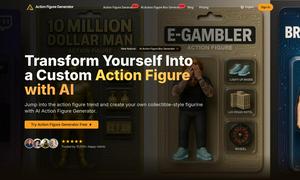
Discover the Best AI Tools to Boost Your Productivity
Find the Best AI Tools to Optimize Your Work and Personal Tasks
Best Crisis Communication AI Tools in 2024
What is Crisis Communication
Crisis Communication Category encompasses tools and strategies designed to effectively manage communication during emergencies. This category aids organizations in mitigating risks, delivering timely information, and maintaining public trust. Key benefits include enhanced responsiveness and improved stakeholder engagement, ensuring effective crisis management.
How Crisis Communication works
Crisis Communication Category functions by implementing a structured approach to communication during emergencies. This begins with assessing potential risks, followed by crafting clear messages tailored for different audiences. The process involves continuous monitoring of the situation, adjusting messaging as necessary, and utilizing various channels for effective outreach. By incorporating best practices and innovative tools, organizations can effectively manage their communication strategies to respond to crises swiftly and maintain public trust.
What are the advantages of Crisis Communication?
The advantages of the Crisis Communication Category include enhanced efficiency in communication management, practical strategies for immediate response, and best practices tailored for emergency situations. This category ensures organizations can navigate crises effectively, preserving stakeholder relationships while delivering accurate information quickly, thus reinforcing trust and credibility during critical moments.
Key Features for Crisis Communication
Real-time Communication Management
Real-time Communication Management is a dynamic key feature of the Crisis Communication Category, allowing organizations to respond swiftly during emergencies. This feature enhances timely message delivery, ensuring stakeholders receive critical updates promptly, which is essential for maintaining trust and effective crisis navigation.
Stakeholder Engagement Strategies
Stakeholder Engagement Strategies highlight another key feature of the Crisis Communication Category. By fostering open lines of communication and actively involving stakeholders, organizations can build trust and transparency, crucial elements for effective crisis resolution and long-term relationship maintenance.
Crisis Simulation Training
Crisis Simulation Training is a vital feature that uniquely defines the Crisis Communication Category. This element equips organizations with practical skills to handle real-life emergencies, facilitating preparedness and ensuring teams can execute communication plans effectively during actual crisis situations.
Use Cases for Crisis Communication?
Common use cases for the Crisis Communication Category include managing public relations during natural disasters, addressing regulatory crises within industries, and handling corporate emergencies such as data breaches or product recalls. In these scenarios, the category helps organizations respond efficiently, ensuring accurate information is communicated effectively to all stakeholders while minimizing reputational damage.
FAQs for Crisis Communication
What is the primary benefit of using the Crisis Communication Category?
The primary benefit of using the Crisis Communication Category lies in its ability to streamline and enhance communication strategies during emergencies. This ensures organizations can respond promptly to crises, delivering clear and accurate messages that help maintain public trust and effectively mitigate potential reputational damage.
How does real-time communication improve crisis management?
Real-time communication significantly improves crisis management by facilitating immediate information dissemination to stakeholders. With the Crisis Communication Category's tools, organizations can rapidly respond to developments, ensuring that accurate updates are delivered promptly, thereby minimizing confusion and reinforcing public confidence.
What role does stakeholder engagement play in crisis communication?
Stakeholder engagement is crucial in crisis communication as it ensures transparency and builds trust between organizations and their audiences. The Crisis Communication Category provides strategies that foster engagement, allowing organizations to maintain open lines of communication during crises, which is vital for effective resolution and reputation management.
What makes the Crisis Communication Category unique in managing crises?
The Crisis Communication Category stands out in managing crises due to its comprehensive approach, integrating real-time communication, stakeholder engagement, and simulation training. This unique combination provides organizations with the tools needed to navigate crises effectively, ensuring they are prepared and responsive during critical situations.
How can organizations utilize crisis simulations effectively?
Organizations can utilize crisis simulations effectively by incorporating them into their training routines within the Crisis Communication Category. These simulations prepare teams for real-life scenarios, helping them practice and refine their communication strategies, ultimately enhancing their ability to respond swiftly and confidently in actual emergencies.
What impact does crisis communication have on public trust?
Crisis communication significantly impacts public trust by ensuring that organizations provide accurate, timely information during emergencies. The Crisis Communication Category emphasizes clear messaging and engagement strategies, reinforcing credibility and confidence among stakeholders, which is essential for maintaining relationships and navigating challenges effectively.





